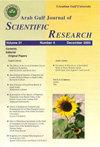Applying bag of words approach to determine remote sensing technology acceptance among smallholder plantations
Q4 Business, Management and Accounting
引用次数: 0
Abstract
PurposeTechnology acceptance is a measure of that technology’s usefulness. Oil palm is one of the biggest contributors to Indonesia’s revenues, thus fueling its economy. Using remote sensing would allow a plantation to monitor and forecast its production and the amount of fertilizer used. This review aims to provide a policy recommendation in the form of a strategy to improve the added value of Indonesia’s oil palm and support the government in increasing oil palm production. This recommendation needs to be formulated by determining the users’ acceptance of remote sensing technology (state-owned plantations, private plantation companies and smallholder plantations).Design/methodology/approachThis review’s methodology used sentiment analysis through text mining (bag of words model). The study’s primary data were from focus group discussions (FGDs), questionnaires, observations on participants, audio-visual documentation and focused discussions based on group category. The results of interviews and FGDs were transcribed into text and analyzed to 1) find words that can represent the content of the document; 2) classify and determine the frequency (word cloud); and finally 3) analyze the sentiment.FindingsThe result showed that private plantation companies and state-owned plantations had extremely high positive sentiments toward using remote sensing in their oil palm plantations, whereas smallholders had a 60% resistance. However, there is still a possibility for this technology’s adoption by smallholders, provided it is free and easily applied.Research limitations/implicationsBasically, technology is applied to make work easier. However, not everyone is tech-savvy, especially the older generations. One dimension of technology acceptance is user/customer retention. New technology would not be immediately accepted, but there would be user perceptions about its uses and ease. At first, people might be reluctant to accept a new technology due to the perception that it is useless and difficult. Technology acceptance is the gauge of how useful technology is in making work easier compared to conventional ways.Practical implicationsTherefore, technology acceptance needs to be improved among smallholders by intensively socializing the policies, and through dissemination and dedication by academics and the government.Social implicationsThe social implications of using technology are reducing the workforce, but the company will be more profitable and efficient.Originality/valueRemote sensing is one of the topics that people have not taken up in a large way, especially sentiment analysis. Acceptance of technology that utilizes remote sensing for plantations is very useful and efficient. In the end, company profits can be allocated more toward empowering the community and the environment.应用词袋法确定小农人工林遥感技术接受度
技术接受度是衡量该技术有用性的标准。油棕是印尼收入的最大贡献者之一,从而推动了该国的经济。利用遥感可以使种植园监测和预测其产量和肥料使用量。本审查旨在以战略的形式提供政策建议,以提高印度尼西亚油棕的附加值,并支持政府增加油棕产量。这项建议需要通过确定用户对遥感技术的接受程度(国有种植园、私营种植园公司和小农种植园)来制定。设计/方法/方法本综述的方法使用了通过文本挖掘(词袋模型)进行情感分析。该研究的主要数据来自焦点小组讨论(fgd)、问卷调查、对参与者的观察、视听文件和基于小组类别的重点讨论。访谈和fgd的结果被转录成文本并进行分析,1)找到可以代表文件内容的单词;2)分类并确定频率(词云);最后3)分析情绪。结果表明,私营种植园公司和国有种植园对在其油棕种植园中使用遥感具有极高的积极情绪,而小农则有60%的阻力。然而,如果这项技术是免费的,并且易于应用,那么小农仍然有可能采用这项技术。研究的局限/意义基本上,技术的应用是为了使工作更容易。然而,并不是每个人都精通科技,尤其是老一辈人。技术接受度的一个维度是用户/客户保留率。新技术不会立即被接受,但会有用户对其使用和易用性的看法。起初,人们可能不愿意接受一项新技术,因为他们认为它是无用的和困难的。技术接受度是衡量与传统方法相比,技术在使工作更容易方面的有用程度。因此,要提高小农对技术的接受程度,需要加强政策的社会化,并通过学术界和政府的宣传和奉献。社会影响使用技术的社会影响正在减少劳动力,但公司将更有利可图,效率更高。原创性/价值遥感是人们尚未大量研究的话题之一,尤其是情感分析。接受利用遥感技术进行种植园的技术是非常有用和有效的。最后,公司的利润可以更多地分配给社区和环境。
本文章由计算机程序翻译,如有差异,请以英文原文为准。
求助全文
约1分钟内获得全文
求助全文
来源期刊

Arab Gulf Journal of Scientific Research
综合性期刊-综合性期刊
CiteScore
1.00
自引率
0.00%
发文量
0
审稿时长
>12 weeks
期刊介绍:
Information not localized
 求助内容:
求助内容: 应助结果提醒方式:
应助结果提醒方式:


